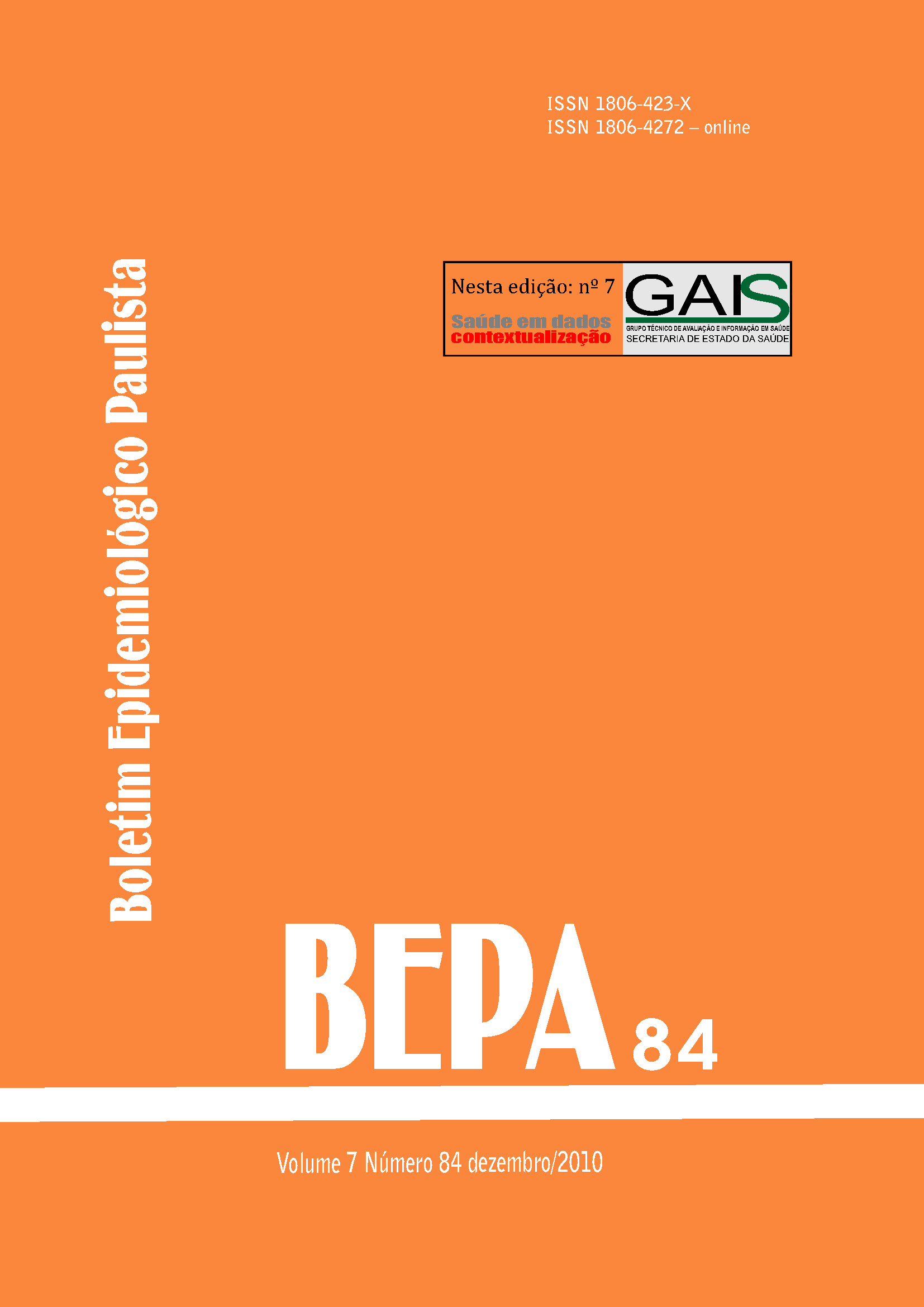Abstract
The definitive diagnosis of cutaneous leishmaniasis depends on meeting ofetiological agents. The traditional culture technique (TCT) is developed i n t u b e s d e m a n d p ro l o n g e d i n c u b a t i o n , l a r g e vo l u m e o f t h e cultivationmedium and sample. The microculture technique (MCT) developed in 96 well culture plates use low volume of the cultivation medium and thesample, possible to introduce different inocula per sample examined. Thegrowing of L. (V.) braziliensis (MHOM/84/LTB300) was achieved in the twotechniques to determine the minimum number of the parasites necessaryfor proliferation. From serial dilutions with L. (V.) 0 3 braziliensis, inoculations were obtained at concentrations of 1x10 to 1x10 3 for cultivation. In concentration of 1x10 was observed parasite 0 proliferation since 48 hour of0cultivation. A single parasite (1x10 ) was sufficient to allow the proliferation in both techniques. In the inoculum concentration 1x101 a TTC reached 1x108 parasites, but the proliferation was first observed in the MCT. In concentration of 1x103 the MCT reached 2x108 parasites. It wasconcluded that MCT is a strategy what allowed the cultivation since a singleflagellate form and further studies are being conducted to assess feasibilityof MCT use as a diagnostic method.
References
Neuber H. Leishmaniasis. J. Dtsch Dermatol Ges. 2008;6(9):754-65.
Gállego M. Zoonosis emergentes por patógenos parásitos: las leishmaniosis. Rev Sci Tech Off Int Epiz. 2004; 23(2):661-76.
Oumeish OY. Cutaneous leishmaniasis: a historical perspective. Clin dermatol. 1999;17:249-54.
Desjeux P. Leishmaniasis: current situation and new perspectives. Comp Immunol Microbiol. Infect Dis. 2004;27:305-18.
Bates PA, Tetley L. Leishmania mexicana: induction of metacyclogenesis by cultivation of promastigotes at acidic pH. Experimental Parasitology. 1993; 76:412-23.
Ministério da Saúde. Manual de vigilância da leishmaniose tegumentar americana. Brasília; 2007. p.21.
Garcia AS. Alternativas nutricionais para o crescimento primário in vitro e para a identificação de protozoários do gênero Leishmania [dissertação de mestrado]. São Paulo: Coordenadoria do Controle de Doenças da Secretaria de Estado da Saúde de São Paulo; 2007.
Degrave W, Fernandes O, Campbell D, Bozza M, Lopes U. Use of molecular probes and PCR for detection and typing of Leishmania – a mini review. Mem do Inst Oswaldo Cruz. 1994;89(3):463-9.
Prata A, Silva LA. Calazar. In: Coura JR. Dinâmica das doenças infecciosas e parasitárias. Rio de Janeiro: Guanabara Koogan; 2005. V. 1, p. 713-32.
Reithinger R, Dujardin JC, Louzir H, Pirmez C, Alexander B, Brooker S. Cutaneous leishmaniasis. Lancet Infect Dis. 2007;7(9):581–96.
Murray HW, Berman JD, Davies CR, Saravia NG. Advances in leishmaniasis. Lancet. 2005;366:1561-77.
Singh S. New developments in diagnosis of leishmaniasis. Indian J Med Res. 2006;123:311-30.
Andresen K, Gaafar A, El-Hasan A, Ismail A, Dafaila M, Theander TG, et al. Evaluation of the polymerase chain reaction in the diagnosis of cutaneous leishmaniasis due to Leishmania major. A comparison with direct microscopy of smears and section from lesions. Trans R Soc Trop Med Hyg. 1996;90:133-5
Schuster FL, Sullivan JJ. Cultivation of clinically significant hemoflagellates. Clin Microbiol Rev. 2002;15(3):374-89.
Boggild AK, Miranda-Verastegui C, Espinosa D, Arevalo J, Adaui V, Tulliano G, et al. Evaluation of a microculture method for isolation of Leishmania parasites from cutaneous lesions of patients in Peru. J Clin Microbiol. 2007;45(11):3680-84.
Gutierres A, Tolezano LFC, Garcia EL, Westphalen EVN, Westphalen SR, Araújo MFL, Barbosa JER, Aureliano DP, Taniguchi HH, Cunha EA, Garcia RA, Hiramoto RM, Tolezano JE. A microculture technique for growing trypanosomatids parasites of leishmaniasis and chagas´disease. Preliminary results. VII Encontro do Instituto Adolfo Lutz; outubro de 2007; São Paulo.
Hide M, Singh R, Kumar B, Banuls AL, Sundar S. A microculture technique for isolating live Leishmania parasites from peripheral blood of visceral leishmaniasis patients. Acta Trop. 2007;102:197-200.
Maia C, Ramada J, Cristóvão J, Gonçalves L, Campino L. Diagnosis of canine leishmaniasis: conventional and molecular techniques using different tissues. Vet J. 2009;179:142-4.
Lightner LK, Chulay JD, Bryceson ADM. Comparison of microscopy and culture in the detection of Leishmania donovani from splenic aspirates. Am J Trop Med Hyg. 1983; 32(2):296-9.
Allahverdiyev AM, Uzun S, Bagirova M, Durdu M, Memisoglu HR. A sensitive new microculture method for diagnosis of cutaneous leishmaniasis. Am J Trop Med Hyg. 2004;70(3):294-7.
Allahverdiyev AM, Bagirova M, Uzun S, Alabaz D, Aksaray N, Kocabas E, et al. The value of a new microculture method for diagnosis of visceral leishmaniasis by using bone marrow and peripheral blood. Am J Trop Med Hyg. 2005; 73(2):276-80.
Maia C, Campino L. Methods for diagnosis of canine leishmaniasis and immune response to infection. Vet Parasitol. 2008;158(4):274-87.
Oliveira MA, Pires AS, Bastos RP, Lima GM, Pinto SA, Pereira LI, et al. Leishmania spp. parasite isolation through inoculation of patient biopsy macerates in interferon gamma knockout mice. Rev Inst Med Trop São Paulo. 2010;52(2):83-8.

This work is licensed under a Creative Commons Attribution 4.0 International License.
Copyright (c) 2010 Alessandra Gutierres, Luis Felipe Cantini Tolezano, Elizabeth Visone Nunes Westphalen, Roberto Mitsuyoshi Hiramoto, Jeffrey Jon Shaw, José Eduardo Tolezan
